Is a Solar-Powered Full-Time RV Life More Sustainable?
"Living simply is not about living in poverty or self-inflicted deprivation. It's about living an examined life where one has determined what is truly important and enough...and then just let go of all the rest." ~ Duane Elgin, Author & Speaker
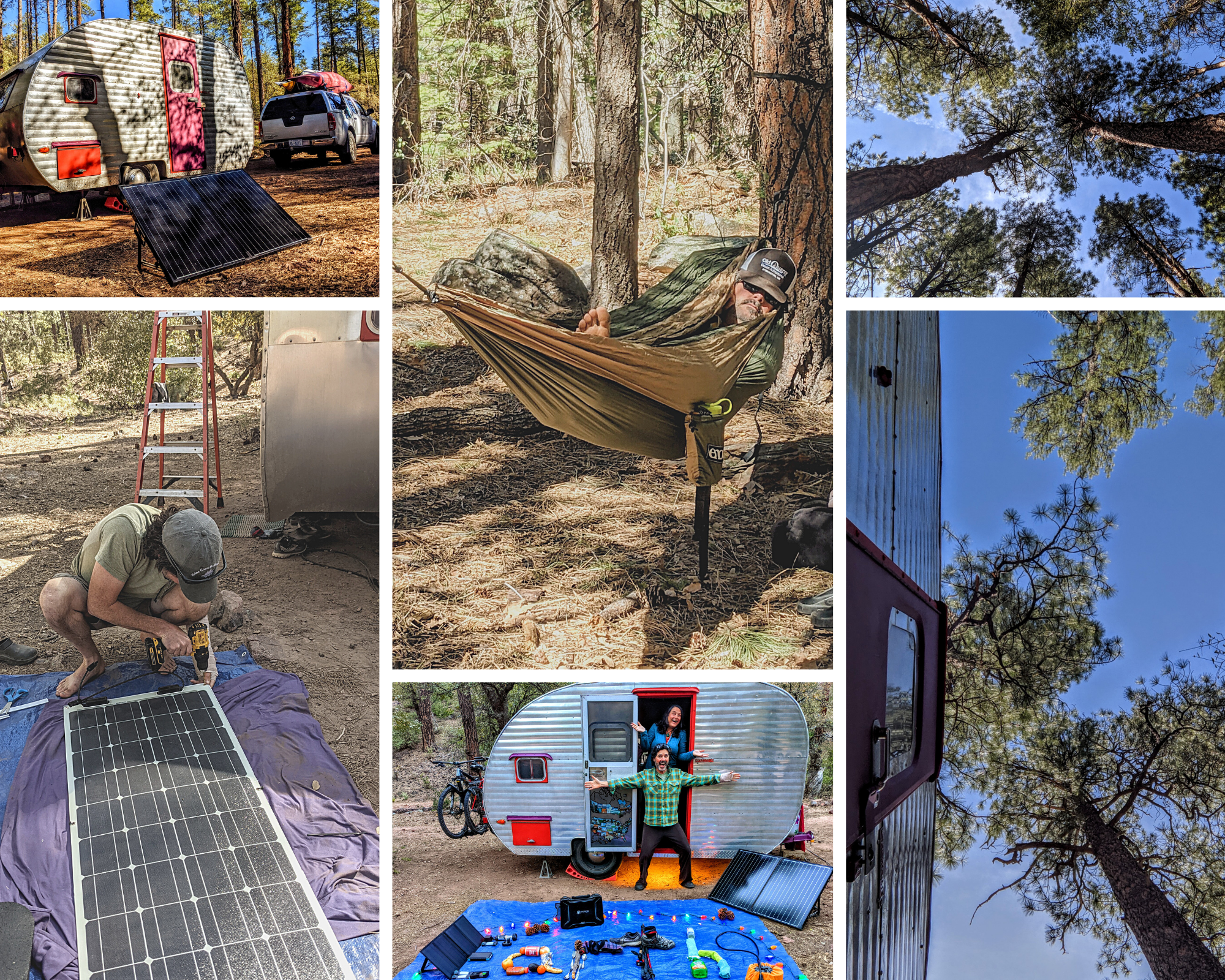
Last week, we celebrated the 51st anniversary of Earth Day while boondocking among the gorgeous Ponderosa Pines along the Mogollon Rim of central Arizona. We finished the second of two major solar upgrades to our truck and trailer this spring to mark the occasion. April 22nd is a day that many people across the planet recognize as a day to really think about our planetary home. Some celebrate by setting Earth-friendly goals that encourage them to live more sustainably for the year ahead. Others simply ignore it. If you are a Renogy customer, you more than likely fall into the first group. Thank you for giving a share!
But, what does it mean to live sustainably? A professor friend told us that it is a deep examination of wants vs. needs. Nice thing to say at a cocktail party, but what does that mean exactly? My wants and my needs aren’t going to work for everyone. It is such a deeply personal concept -- one that takes time and a lot of thought even to get a handle on. But it starts with asking yourself the question, does this thing make me happy? With the world transforming at the speed of each new iPhone release, it takes a lot of intention, and courage, to stop and examine what is truly important. The world tries to tell you what it is that will make you happy, but only you can really say for sure.
We have both wrangled with this concept for the past 20 years. In 2004, we gave up the whole New Year’s Resolution nonsense and shifted to making “green” goals for ourselves. We figured that if we focused on just one thing each year, like composting all our food scraps, by the time we got around to another goal, the old one would be a habit. It worked. We reduced our energy usage, and we recycled/reused/repaired every chance we could. We put a good deal of time and labor into growing an organic garden. We did our best to commute together, and we downsized our needs. We even “drove the bus” at the university, where we worked to create a carbon offset calculator for group travel within our programs. We did a pretty good job of sticking with these changes each year and beyond, but it never quite seemed like enough.
Why were we working so many hours just to maintain the “American Dream”? Why did two people need a 3-bedroom home with two cars? Why did we buy so much stuff to fill our house when the joy it gave was fleeting, and we only lived in about one-third of the space? The more stuff we owned, the more that stuff owned us.
The lifestyle we worked so hard to create was not sustainable, and we couldn’t keep it up anymore. For all that, we had paid the price in lost sleep, overwhelming stress, recurring sickness, and the unmistakable feeling that we were slipping away from each other. We needed a change, not just another green goal, and we needed a radical departure from that path. We dreamed of a life that was easier to sustain, requiring less money, fewer hours of work, more time outside adventuring, more time with friends, and more time with each other. We dreamed of a life that couldn’t be bought in a Crate & Barrel catalog, but we didn’t know anyone at the time who was living it.
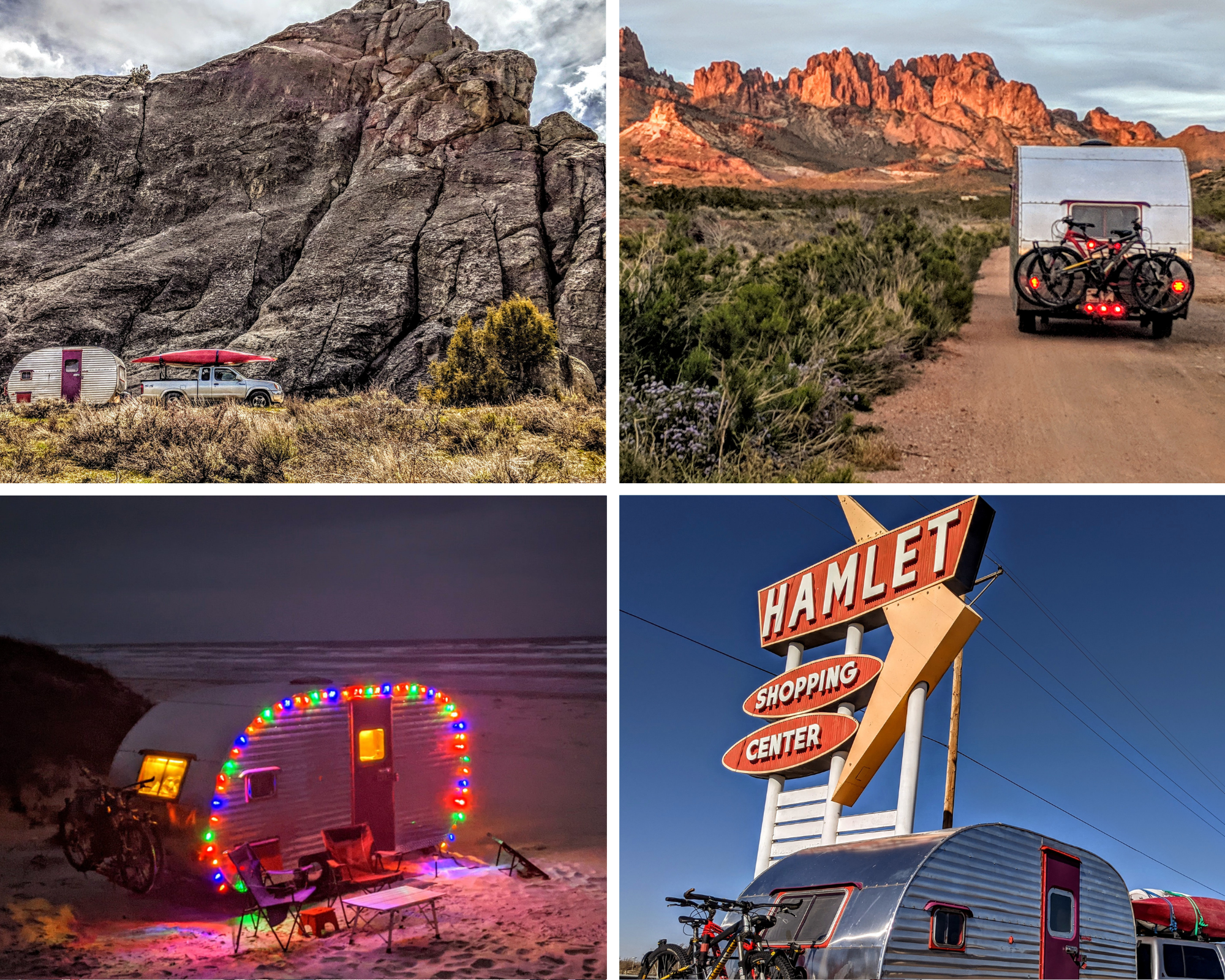
Environmental Sustainability
One of the main reasons we were hooked on this lifestyle was the smaller carbon footprint. How we can reduce our carbon footprint when we travel for our life is a legit question. We’ve done a bit of an analysis of our current lifestyle compared to the average American household. Let’s see how our RV lifestyle stacks up...
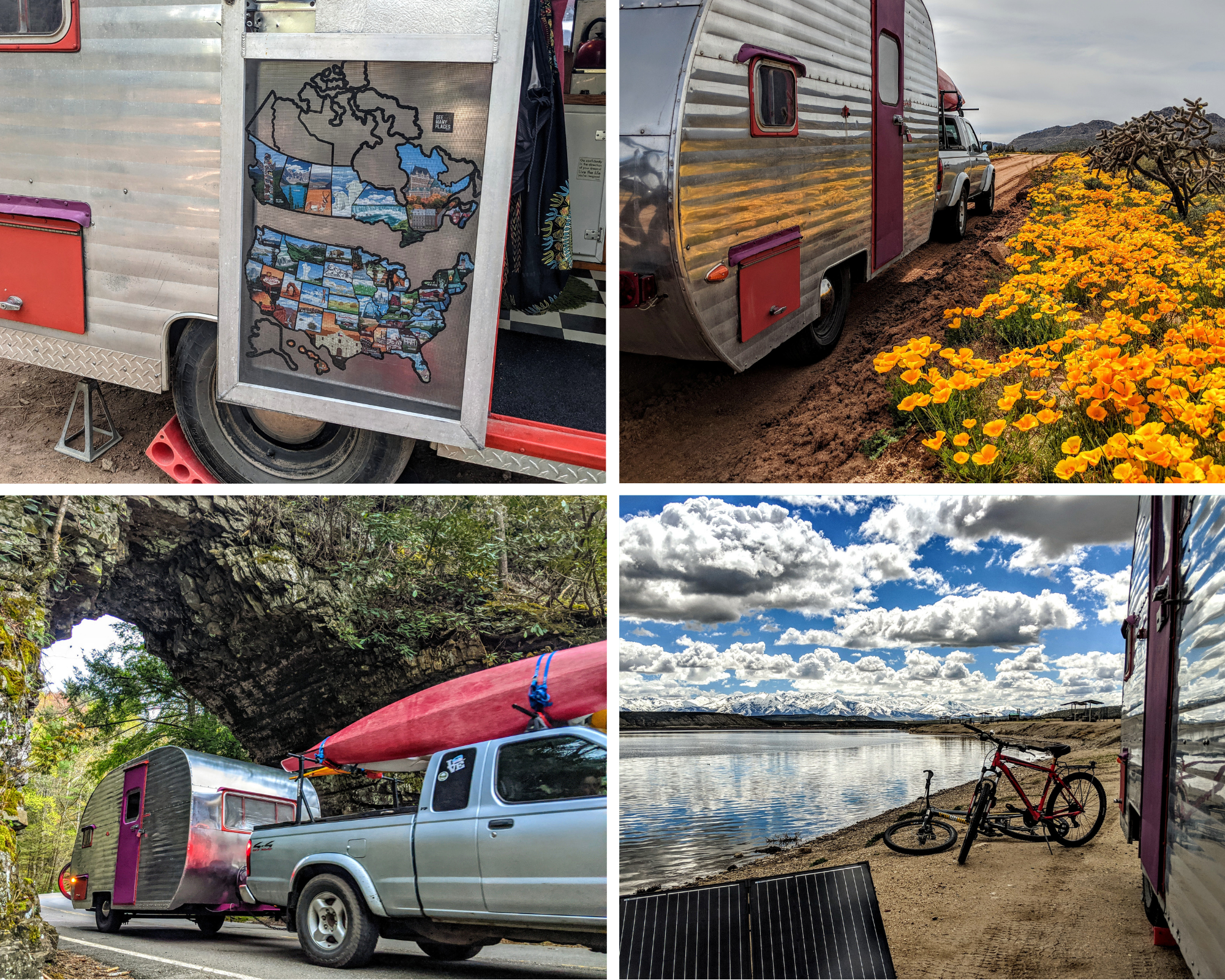
Even with all the travel we do, all the times we’ve crossed the Mississippi, or the Sonoran Desert, we still drive about half the number of miles of the average American couple. Most individual drivers put about 15K miles on their vehicle annually, so for a couple, that’s about 30k per year. Together (the two of us in one vehicle), we average about 16K. When we stay somewhere for a season, we try to walk, bike, or take public transportation as often as we can. Isn’t it amazing that the daily commute and soccer practices can rack up more miles than regional or cross-country travel?
Electricity
Let’s talk about electrical usage. You probably guessed that we use the power of the sun to run our lights, fan, and charge our laptops, smartphone, and batteries -- we are Solar Ambassadors, after all. For the past 8.5 years, we have lived, worked, and traveled with a very small solar-powered system. Our first Renogy system included a 100W Foldable Solar Suitcase, Wanderer Li 30A Charge Controller, 50Ah Lithium Iron Phosphate Battery, and 700W Pure Sine Wave Inverter. The total cost of our entire system was less than $1000, which is significantly less than what the average American spends annually on electricity. Most households spend about $1300 per year on electricity for their home (much of which is still coal-powered), using nearly 11,000 kWh.
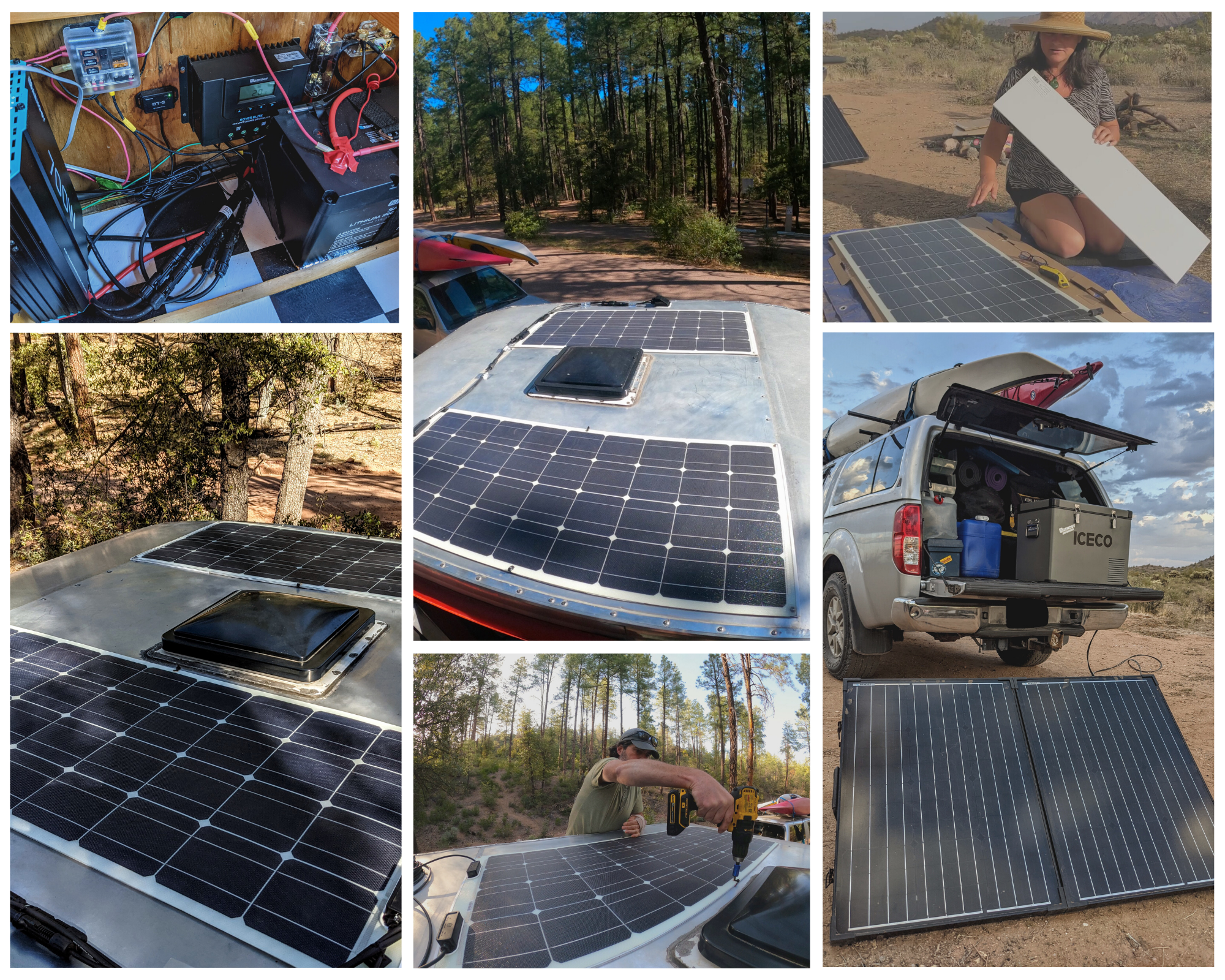
We recently upgraded our solar-powered system, making it even more efficient for our growing mobile business. Admittingly, by most RVers standards, our system is still pretty tiny though it more than meets our needs. We now have two 100W Flexible Panels on Hamlet’s roof (that’s our vintage camper’s name), Rover Elite 40A Charge Controller, 100Ah Smart Lithium Iron Phosphate Battery, and the same 700W Pure Sine Wave Inverter. We kept the option to plug in our portable solar suitcase in case we are parked under a forest canopy. See Tip #4 in this article for details. This way, we can keep the camper cool and still collect some solar energy.
Additionally, we finally decided to donate our standard cooler (ice-powered) and purchase a 12V ICECO refrigerator.* To power this fridge/freezer, we added a 30A Dual Input DC to DC Charger to our truck bed. We repurposed our previous 50Ah Lithium Iron Phosphate Battery and 100W Foldable Solar Suitcase to power it.
All in all, our 2021 upgrade provides us with 300W of solar panels and 150Ah of LFP batteries, allowing us to stay anywhere, live off-the-grid, and still have the electricity we need to power our lives. It’s been months since we needed to plug into the grid.
*If you are interested in purchasing a 12V ICECO fridge/freezer, head to their website and use our promo code “CANLIFE” at checkout to save 12% off.
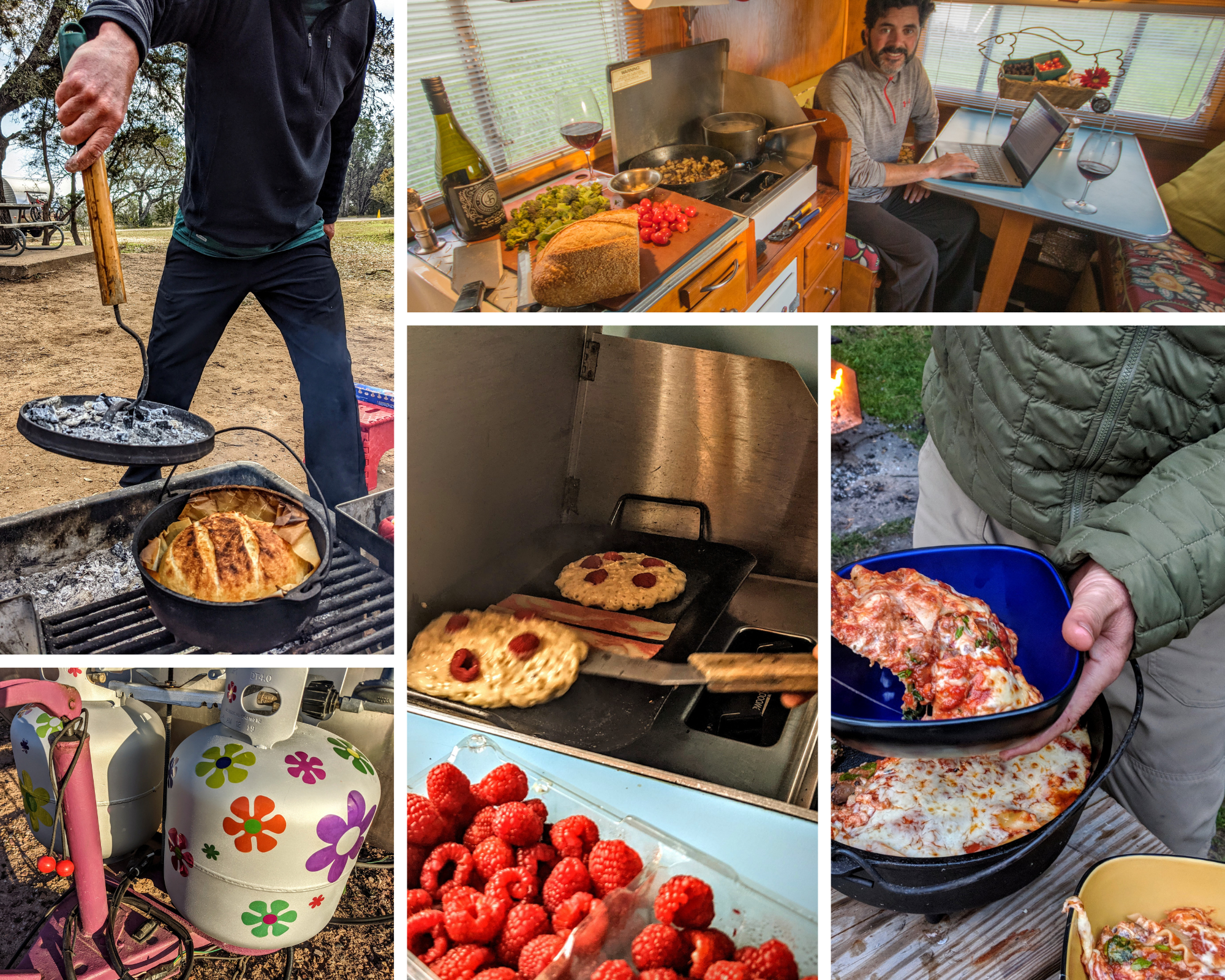
Cooking & Heating
As foodies, we love to cook with gas or a campfire. We simply don’t like electric stoves and never use a microwave, electric coffee maker, or even a toaster. Instead, we use a flat top griddle, French press, and the amazing Banks Fry-Bake; we even have an Amish, non-electric waffle iron, which makes an unbelievable brunch or dessert. We only use about 25-30 gallons of propane per year which costs us around $100, and that includes heating our small space. Compare this to the $3860 most Americans spend using about 1500 gallons! We used to spend upwards of $1500 just for our furnace in our old home.
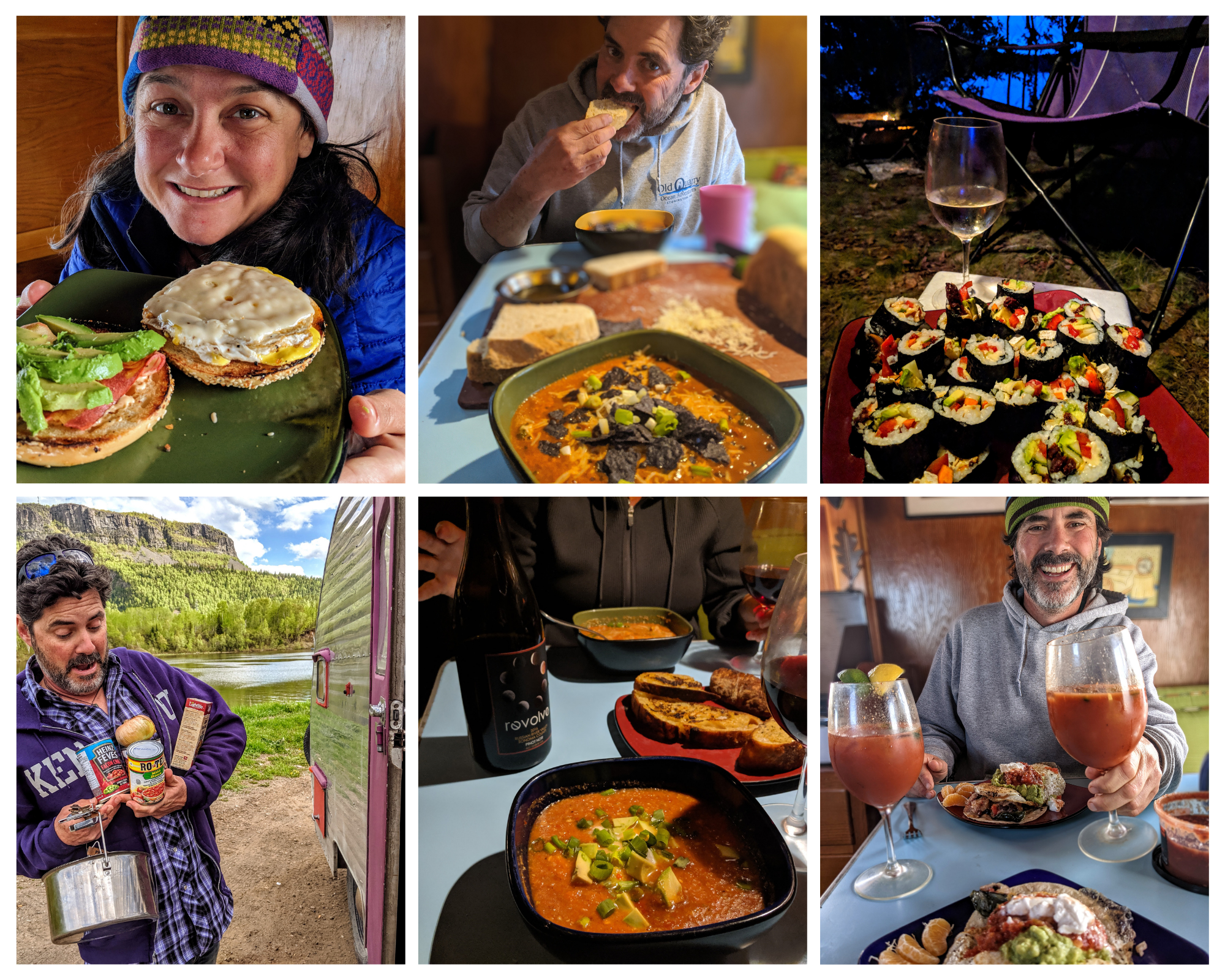
Let’s talk about food choices for a minute. Can you name some ways to reduce your carbon footprint when it comes to food? If you said, “eat mostly plant-based foods,” reduce food waste, compost, etc., then you are onto something! We are both vegetarians and have been for nearly 25 years. Reducing your meat consumption can have a huge impact on reducing your carbon footprint -- so you can simply not wasting the food you do buy. Since we can’t store a bunch of food because we simply don’t have space, we don’t have lettuce or leftovers rotting in the back of our fridge. To be fair, wasting food is just a waste of everything. It is a waste of the energy that went into growing or producing it, a waste of the energy to deliver it, put it on the shelf, put it in your fridge, and carry it to its final landfill destination. Our biggest challenge is composting on the road, as we just don’t have regular access to a compost bin or pile.
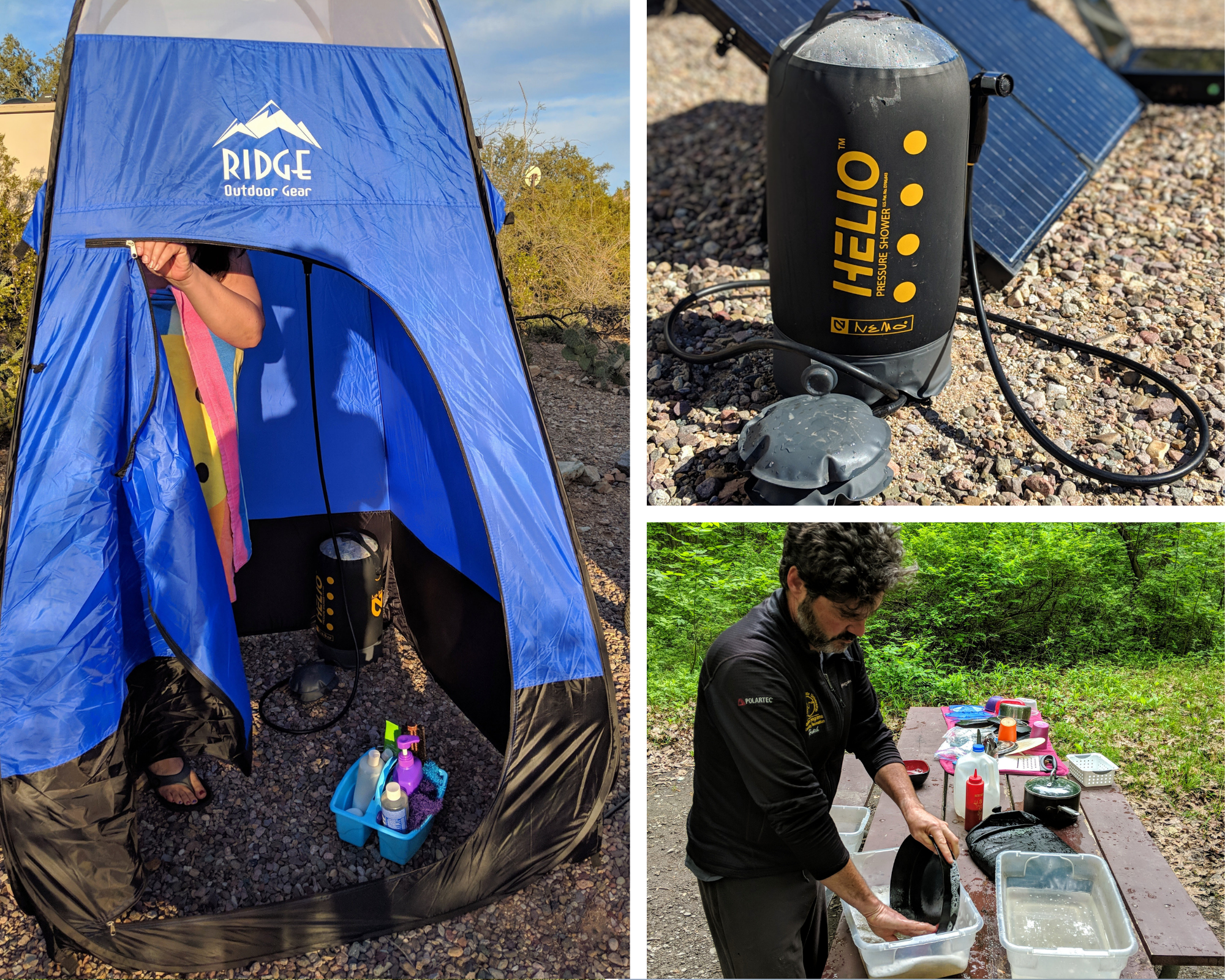
Water
Did you know that the average American home uses 300 gallons per household per day? That made our heads spin! Because we choose to shower only 2-3x per week using very little water each time and limit the water we use to wash dishes, wash clothing only when they are truly dirty, and very seldom use flushing toilets, we estimate our water usage at about 5-6 gallons per day. It might be as high as 10 gallons on a really heavy water usage day, but that would be the max.
While living on the road in our travel trailer for the past 8.5 years, we’ve come close to truly feeling like we’ve got it all. All that we need that is. But we’ve also realized that “living sustainably” goes beyond limiting our carbon footprint; it includes having time to do the things we love and spend time with the people we love. It means living a more healthy and curious life pursuing interests for their own sake rather than monetary gain or career advancement.
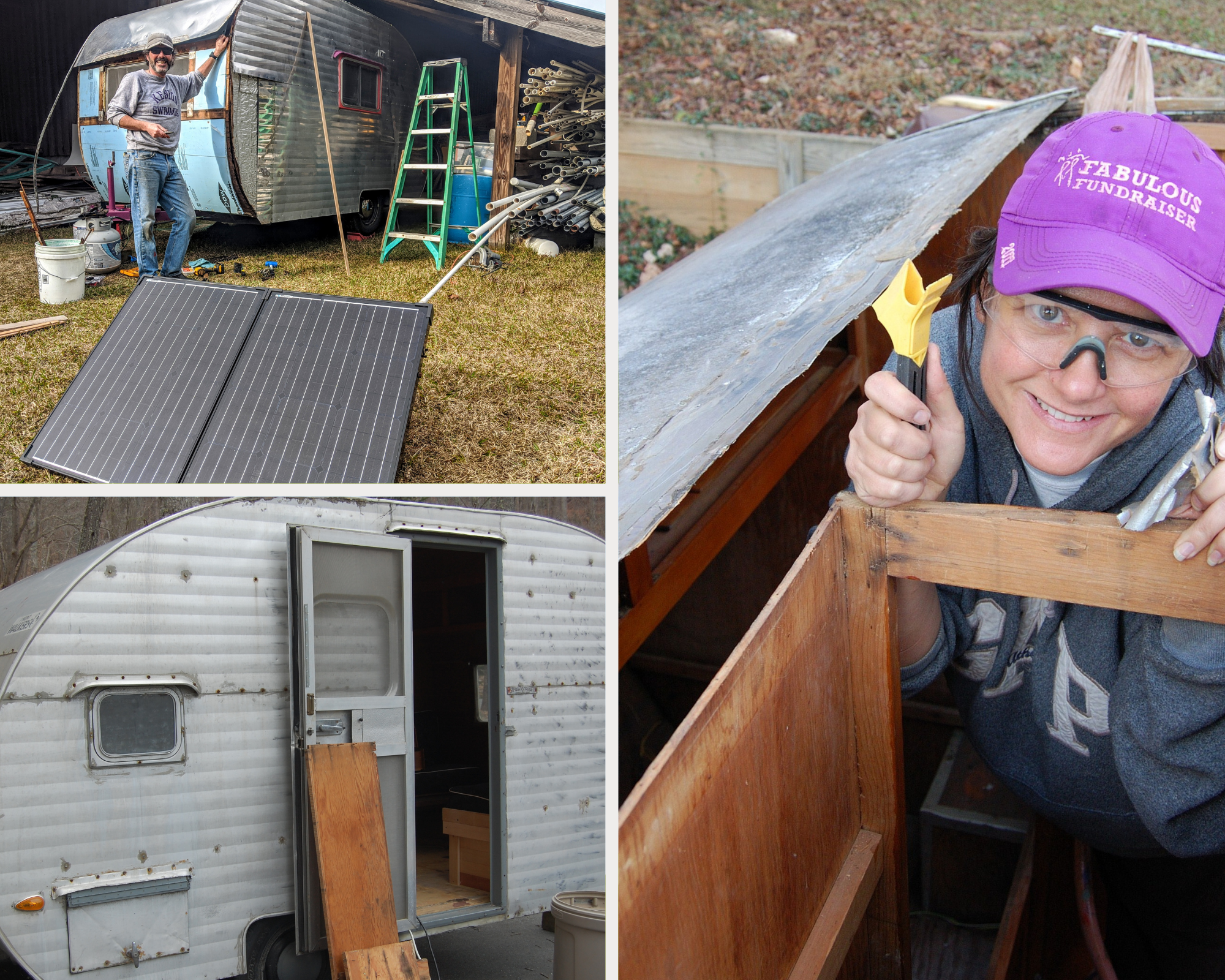
Downsizing & Upcycling
When we made the decision to hit the road, instead of going out and buying something brand new, we brought new life to an old worn-out vintage trailer that had been relegated to the needs of a bachelor hunter once a year during deer season. We purchased our Hamlet on eBay for $900 and spent six months and maybe $2000 extra dollars to bring him back to life. What we saved in supplies, we more than made up for in labor -- it was a labor of love, though. We did nearly all the work ourselves, though we did hire some local folks to do the things we didn’t have the skills or tools to do.
When we downsized our former home in the mountains of NC from 1650 to 72 square feet, we donated, sold, or gave away 90% of our stuff. Surprisingly the hardest part wasn’t doing it. And it was simply making the decision to do it. This was a process for us that didn’t happen overnight; it took a few years, and we kept returning to the idea of examining what we really needed to be happy.
Just recently, we went through the small amount of stuff that we saved in a friend’s basement. We applied the same process...what made us happy? We are proud to say that besides the things that we have with us in the truck and trailer, we are down to 5 medium-sized tote bins and one antique kitchen table stored under the parent’s basement steps.
How did we do it? We started. We started looking at the 3 square feet in front of us in the closet or in the dresser or on the bookshelf -- what made us happy? We’ve boiled our stuff down to the essentials. What made the cut either had to be something we use regularly or has multiple functions. It has to be durable and well made because we use the heck out of it! When we buy new things, we look for used items first, and we regularly fix or repurpose things rather than just throwing them out, etc. If, and when, we buy something new, we make sure it’s high quality enough, though not necessarily expensive, to last a long time!
Financial Sustainability
Do you believe that the idea of living within our means or reducing our needs to fit within our means and values is somewhat of a lost art?
Debt is really scary, and it keeps people stuck on the treadmill. People carry a lot of debt – upwards of $9000 on their credit cards. Managing and paying off debt is a major factor in our being able to live sustainably. We both left school with a little debt but worked hard to get it paid off quickly. We now live completely debt-free. We have investments for the future and continue to contribute to our retirement accounts every year. This wasn’t easy to do, but the payoff has been huge. We haven’t touched a cent of our investments since we left our full-time careers, as we can easily live on what we make in a few months…which brings us to the next point.
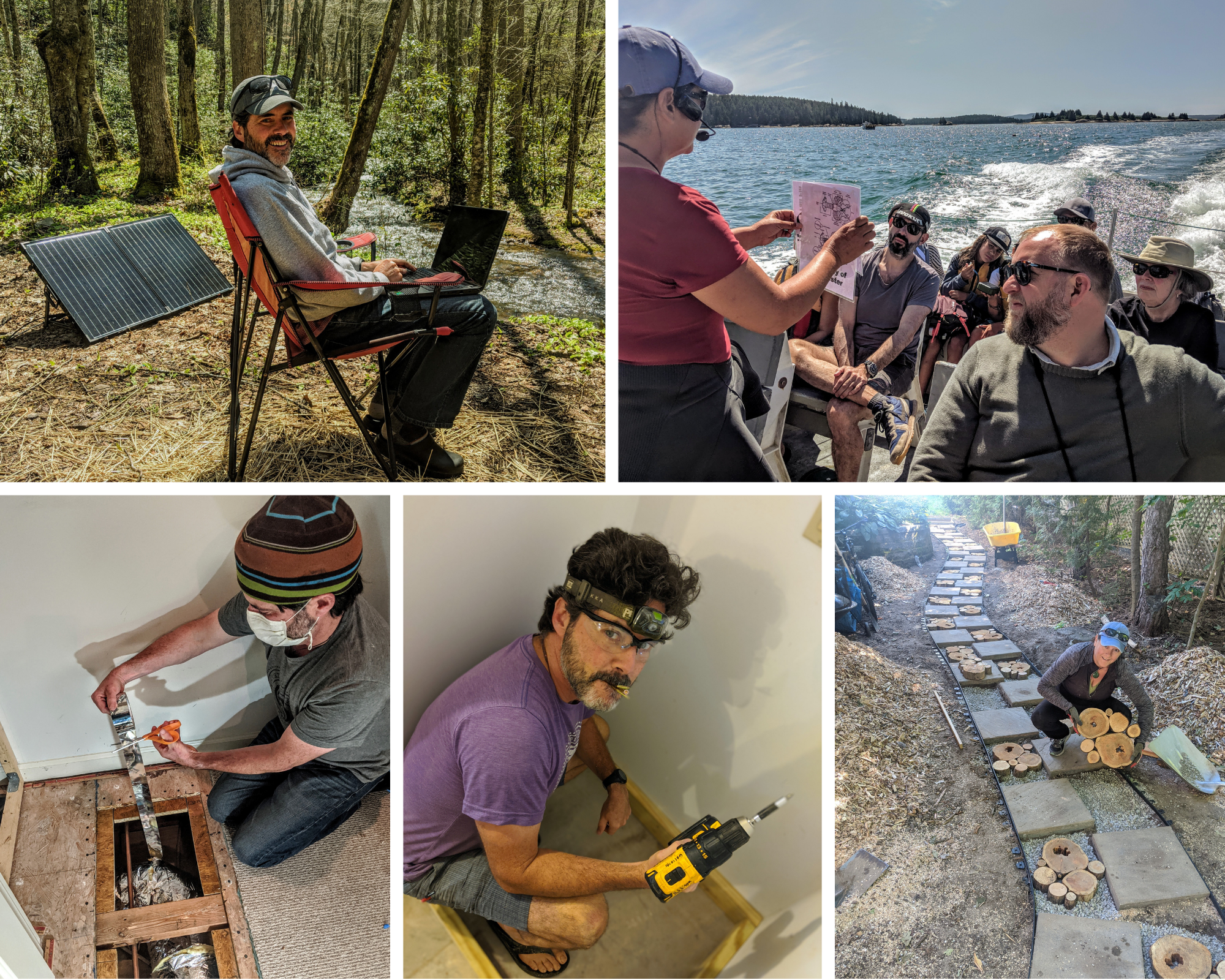
Would you like to be able to work for just a few months out of the year and still live a lifestyle that you loved? We’ve reduced our “overhead” (the cumulative cost of our lives), and in doing so, we don’t need to work 12 months out of the year. We thrive on about $26K per year for both of us! Between seasonal and online work, we can make this in about 4-5 months per year. The rest of the time can be spent volunteering, traveling, and visiting friends.
Amortized over 8.5 years, we estimate that we’ve spent about $1050 per year for our rolling tiny home. This includes the initial cost of the camper, maintenance we’ve done, annual registration, the solar-powered system, and annual camping fees. We want to emphasize that we always pay camping fees when they are expected at the places we stay. These fees support the precious public lands that we thoroughly enjoy -- without those fees collected, these places will disappear. Just for a fun comparison, do you know the average cost of a traditional home in the U.S.? About $200K. And, how much money does the average household spend on living expenses (mortgage/rent, utilities, taxes, furnishings, maintenance)? About $19K annually.
What are some other creative and fun ways that we keep our costs low and our adventure high? It’s not rocket science, and we simply go back to where we started -- we examine our wants against our needs. If we don’t need it, we don’t buy it. When you live in 72 sq. ft…not much fits! No gym memberships are required. We use the outdoors as our playground and human-powered adventure as much as possible when we are exploring the natural world. Having such a small space encourages us to spend most of our time outside -- let’s just say we are never in danger of not getting enough Vitamin D.
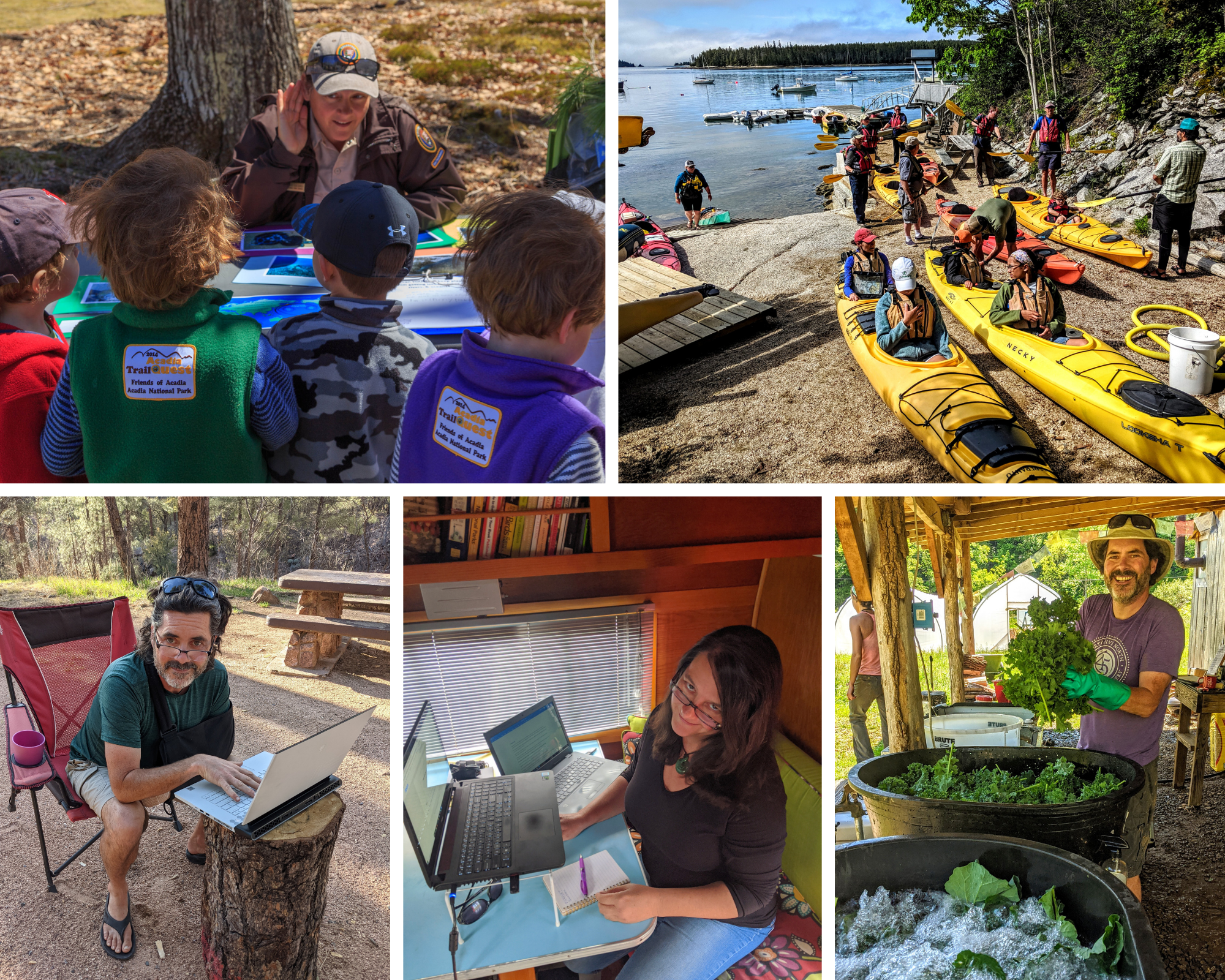
We also do work-trade on farms, volunteer with a variety of organizations, as well as help out friends. We find free and very low-cost camping whenever possible, as we typically prefer to camp in national forests and on BLM land to private campgrounds or state parks.

Personal Relationships
When we talk about sustainability as a society, we often don’t think about our relationships. But ask yourself what has sustained you through the last year. We’d bet that it’s been your friends and relationships. For many of us, it’s the people we know and love that truly get us through the day.
Overall, this traveling lifestyle has given us the gift of time. And it’s time we can spend more freely with those we love. With this time, we can better take care of ourselves, sleep more, pursue activities that give us energy, be outside more, and give back to projects we believe in. Even during the height of COVID in the U.S., we were able to stay safe and still stay connected to our people.
Lots of folks ask us about spending so much time together in such a small space. What do we do when we have conflict? Well, everything that happens in a small space happens quicker. We may arrive at a conflict sooner in a small space, but we resolve it sooner -- after all, there’s only one door to slam. And getting outside, alone, on the run, or on a walk is like taking a bath for the soul. We return ready to discuss and re-engage to this intentional thing we’ve got going. It’s not always easy sharing such a small space with your partner; let’s just say that our communication skills have grown by leaps and bounds.
We’ve also had extended visits with our aging parents. These visits help us have a closer and more real relationship than just holidays and extended summer weekends. We’ve been able to give back to them by helping with house projects and just checking in on how they’re getting on. We’ve actually spent more meaningful time with our parents than when we lived in the same town.
With friends, social media is a great way to keep up with them, but there is nothing like dropping in and reconnecting with good friends -- and we have folks all over the country in nearly every state. For the past year, not being able to hang out with friends and family freely has really made this issue salient, but outside socially distant and still able to see friends was a lifeline.
Our network of family and friends across the country is helpful because we can drop in on their lives and get to know their kids, make them dinner, help them with a house project or two, and maybe get a shower in the trade. It keeps the relationships strong and the connections and positive love in our lives powerful!
What Sustains You?
Earlier, we said that we feel like we’ve gotten close to feeling like we’ve got it all -- by our standards. Have we made it there? Not sure, and time will likely tell for us. We know that we feel more in love with this giant blue planet than we were when we first hit the road and more in love with each other. Though there are very few regions of the country we haven’t explored, each time we turn a corner and discover something new, someplace beautiful about which we knew absolutely nothing, we feel that same thrill that spurred us to first pull out of our driveway. It’s just one piece of what sustains us, but for now, it’s more than enough. Happy Earth Day, EVERY DAY, in whatever way you choose to celebrate!
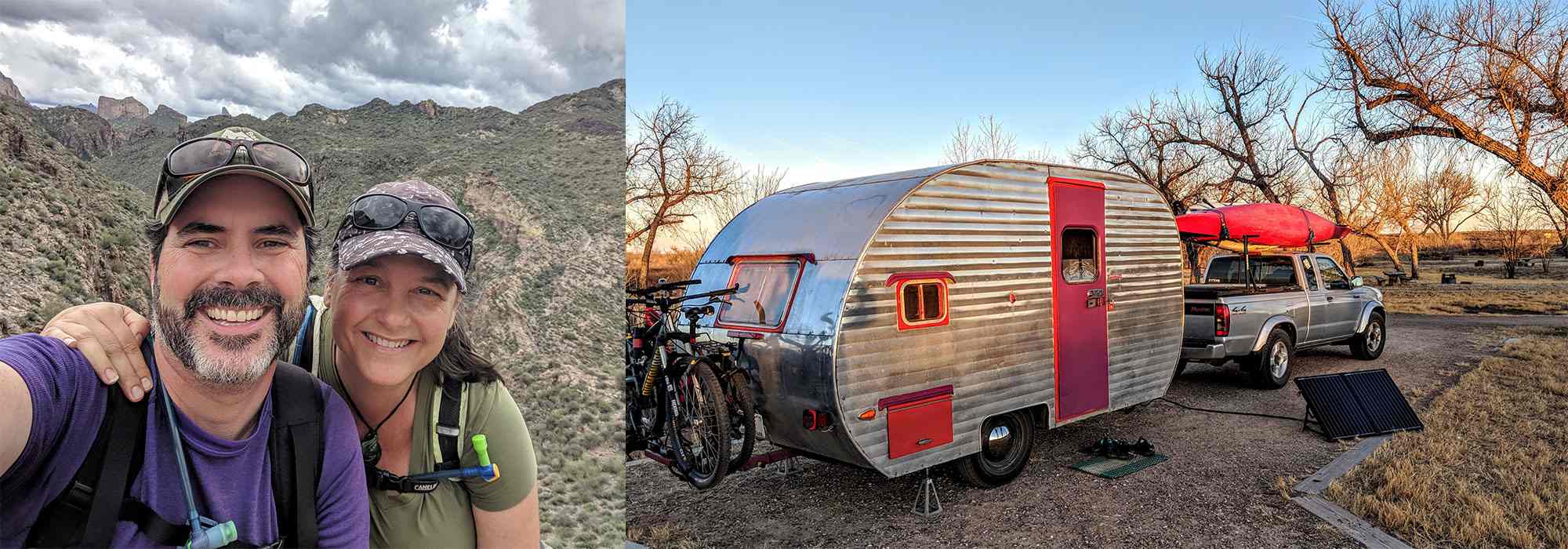

In 2012, Shari Galiardi & David Hutchison left behind careers and a comfortable home in North Carolina to travel with the vintage camper trailer they lovingly restored, outfitted with solar, and named "Hamlet." What began as a short break from careers and responsibility quickly turned into a love affair with road life. They have parlayed their higher education backgrounds, desire for life-long learning, and thirst for adventure travel into writing, photography, video production, and public speaking gigs from coast to coast. Known to their friends as simply Shari & Hutch, you can learn more about their full-time, solar-powered adventures on their website at freedominacan.com. Or, follow them on Facebook, Instagram, and YouTube as “Freedom in a Can, LLC.”








